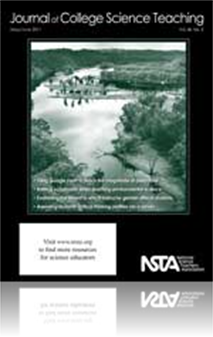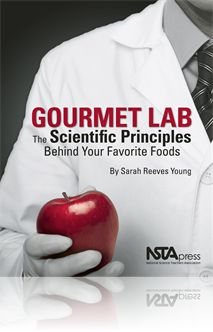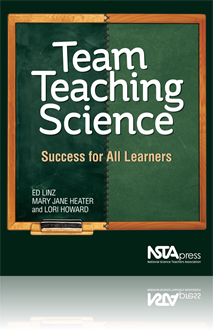All Resources
Journal Article
Point of View: Teach Both Sides on Global Warming
This column shares reflections or thoughtful opinions on issues of broad interest to the community. In this month’s issue the author encourages teachers to teach both sides of global warming, thus teaching students how to evaluate evidence and reco...
Journal Article
The Use of Mastery Learning With Competency-Based Grading in an Organic Chemistry Course
Mastery learning is an instructional method based on the idea that students learn best if they fully understand one concept before moving to the next and has been shown to be extremely effective in math and science curricula. Competency-based grading...
Journal Article
Strategies for the Introduction of Neuroscience for Underrepresented University Students
The University of Puerto Rico Mayaguez hosted a series of academic and applied neuroscience activities as part of a Brain Awareness Week (BAW). The study in this article explores the impact of the BAW events as a vehicle for advancing interest in and...
Journal Article
Using Google Earth to Teach the Magnitude of Deep Time
Most timeline analogies of geologic and evolutionary time are flawed, causing an understanding of relative time with little comprehension of absolute time. Using Google Earth, one can construct an ideal timeline analogy relative to a point in the cla...
Journal Article
Hot Under the Collar: Weighing the Dangers of a Weight-Loss Drug
This column provides original articles on innovations in case study teaching, assessment of the method, as well as case studies with teaching notes. In this month’s issue the goal of the case study is for students to expand their understanding of m...
Journal Article
Instructor Gender and Student Confidence in the Sciences: A Need for More Role Models?
This article examines the extent to which college-level instructor gender affects the confidence of males and females in their scientific abilities....
Journal Article
Battling Ecophobia: Instilling Activism in Nonscience Majors When Teaching Environmental Issues
This article describes an approach to teaching about environmental issues that helps instill a sense of agency in the young learner. Students identify five lifestyle behaviors that contribute to environmental degradation and come up with an alternati...
Journal Article
The Brooklyn Opportunities in Science and Careers (BOSC) program aims to increase student participation in physics, environmental studies, geology, and teaching science using a career-focused strategy to recruit students. Students work in collaborati...
Journal Article
McLean v. Arkansas (1982) and Beyond: Implications for Biology Professors
To assess current trends of evolution instruction in high schools of the mid-South, the authors had Arkansas high school biology teachers and students enrolled in a freshman-level nonmajors biology course at a midsize public Arkansas university respo...
Journal Article
A Comparison of Two Forms of Assessment in an Introductory Biology Laboratory Course
Because of enrollment increases, many institutions have advocated the replacement of free-response exams with forced-choice exams as a time-saving strategy. The study in this article evaluated the replacement of free-response practical-examination qu...
Journal Article
A Novel Instrument for Assessing Students' Critical Thinking Abilities
In this article the authors describe the Assessment of Critical Thinking Ability survey and its preliminary application to assess the critical thinking skills of undergraduate students, graduate students, and postdoctoral fellows....
Book Chapter
Butter Battle: Physical Changes Versus Chemical Changes
When passing hot rolls around the dinner table, buying popcorn at a movie theater, or making cookies, it is there: butter. Creating butter in a bottle helps students see how a physical change can be more drastic than an ice cube melting. This experi...
Book Chapter
Cinnamon Rolls: Creating a Control Set to Analyze the Role of Yeast in Baked Goods
Have you ever taken part in a food fight? There are foods flying left and right, and all you can think about is how you don’t want to get mustard on your new shirt. But instead of worrying about stains, you really should be thinking about density...
Book Chapter
Growing a Pancake: How Environmental Factors Impact Fungi Growth in a Sourdough Starter
Many people spend time cultivating and tending gardens that grow items such as tomatoes, herbs, strawberries, and other produce. But how many people do you know who can grow pancakes? This experiment is all about growing pancakes, or at least an i...
Book Chapter
This experiment presents a different approach to using the biological agent of yeast in a liquid format. Rather than using the yeast in a baking procedure, the fermentation process is highlighted as part of the creation of a carbonated beverage. In...
Book Chapter
If your students are ready to take on more responsibility in the lab, then this is the experiment for you. This experiment guides students through the process of creating their own procedure to test a given independent variable. Students are instr...
Book Chapter
This experiment takes a molecular view of sugar formation, introducing the sucrose molecule and how it can be arranged in different formations to create materials with very different qualities. The lab introduces students to the concept that the c...
Book Chapter
This experiment uses the scientific method skills in a guided inquiry of sugar structure for different classes of candy. The lab is structured to help students use their problem-solving skills to create an experiment that relates sugar structure to...
Book Chapter
Exploding Corn: Differences Between Mass and Volume Changes With Popcorn
The average American eats about 52 quarts of popcorn per year. Think about that the next time you sit down for a movie with a big bowl of popcorn. The science behind corn popping is as simple as boiling water. The physical change in popcorn allows st...
Book Chapter
“Melting” Apples: Using a Temperature Graph to Show Phase Changes in Applesauce
Have you heard the old saying “An apple a day keeps the doctor away?” This experiment allows students to study a phase change in a way that is accessible and edible. The experiment models a physical change from solid to liquid through the re...
Book Chapter
Cold Milk: Measuring Energy Transfer in the Creation of Ice Cream
I scream, you scream, we all scream for ice cream! This experiment demonstrates endothermic reactions in a way that creates a learning experience that connects science with the popular dessert ice cream. Students are introduced to the concept of endo...
Book Chapter
Gummy Invertebrates: Changing Independent Variables in Gelatin Recipes
This hands-on experiment allows students to witness a clear phase change from solid to liquid, while learning key vocabulary about variables and implementing the scientific method. The lab focuses on giving students the opportunity to select the i...
Book Chapter
Acidic Milk: Measuring PH changes When Acid is Introduced in Cheese Making
Most people are not quick to associate the word cheese with the word acid. But the process of making cheese actually begins by raising the acidity of a liquid to cause proteins to curdle to make sour milk. That’s right; acid is used to make sour...
Book Chapter
Berries and Bacteria: Measuring How Acids and Heat Impact Bacteria in Jam
Have you ever had a ripe apple, a juicy strawberry, or a succulent peach? Did the juices flow into your mouth with each bite as you devoured it? On the other hand, have you ever had a piece of fruit that was less than perfect? This experiment uses ...
Book Chapter
American Mozzarella: Calculating Rates of Change for Rennet in Cheese Making
Legend has it that mozzarella was first made when cheese curds accidentally fell into a pail of hot water in a cheese factory near Naples, Italy...and presto—a new cheese was made, and pizza shops starting popping up all over. This experiment wil...
Book Chapter
You have recently found yourself assigned to team teach science. You may be a science teacher with no experience working with a class containing several students with special needs, or you may be a special education teacher who has never taught scien...
Book Chapter
Team teachers need to recognize the importance of establishing positive relationships with school professionals, principals, and parents. These relationships can be accomplished by focusing on establishing communication strategies and working to reso...
Book Chapter
This chapter sums up what the authors hope you have learned in previous chapters of Team Teaching Science: Success for All Learners....
Book Chapter
Teaching Science: A Historical Perspective
It is the authors’ contention that a team of two teachers, one a science teacher with solid content background and the other a special-education-trained teacher, can create a particularly effective synergy to deliver science instruction to what is ...





